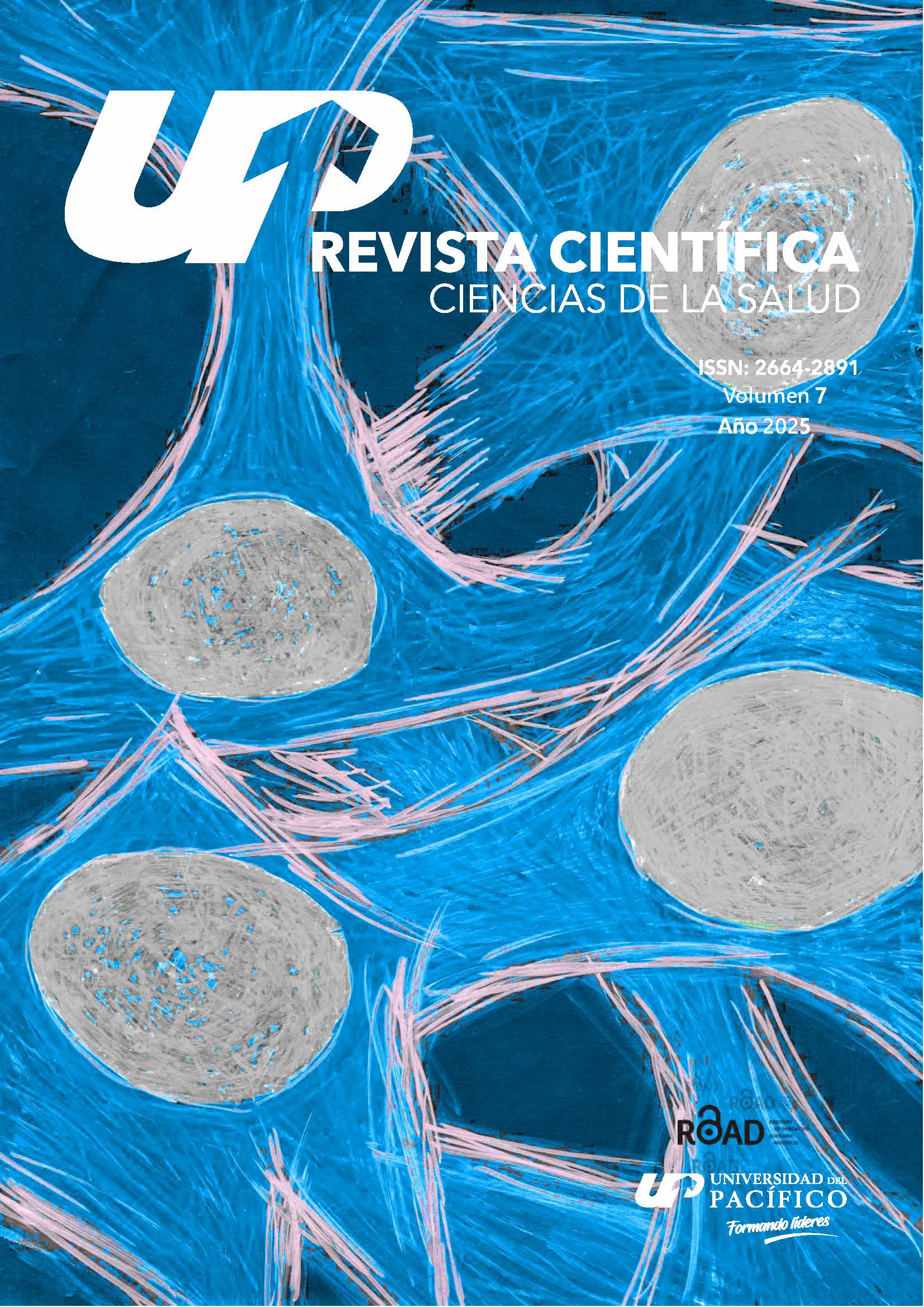Traditional midwifery in the Andes of Peru: lived experiences
DOI:
https://doi.org/10.53732/rccsalud/2025.e7113Keywords:
Midwifery, labor, obstetric, home childbirth, life change events, PeruAbstract
Introduction. Traditional midwifery has made an important contribution to maternal care since ancient times, with favorable results for the mother and the newborn in most cases. Objective. To understand the experiences lived by traditional midwives in the Andes of northern Peru, to promote their inclusion in the maternal health care team and their safe, responsible and adequate participation. Materials and methods. This qualitative, exploratory study, with a phenomenological-empirical design, was conducted with six traditional midwives from the community of Pampa La Laguna, Chota province. They were recruited using chain sampling and provided open-ended responses to a previously validated interview guide. The inductive coding process allowed for the organization of the results into categories and subcategories. Results. The midwives have been doing this work for 17 to 58 years, they learned from their predecessors or from their own experiences. The favorable experiences with their subcategories were obtained as categories: first experiences in midwifery, techniques used in labor, use of plants in midwifery, feeling of well-being after childbirth and the category fortuitous events in labor. Conclusion. The midwives showed great security and confidence with the work they do, they attend to all the labors that occur through ancestral techniques and traditional medicine based on plants, they are fully satisfied when the results are favorable, by chance they arise incidents, which are valued according to their seriousness, to be resolved by them or seek professional help.
References
Sarmiento I, Paredes-Solís S, Dion A, Silver H, Vargas E, Cruz P, et al. Maternal health and Indigenous traditional midwives in southern Mexico: contextualisation of a scoping review. BMJ Open. 2021;11(12):e054542. https://doi.org/10.1136/bmjopen-2021-054542
Suárez-Baquero DFM, Champion JD. Traditional partería providing women's health care in Latin America: A qualitative synthesis. Int Nurs Rev. 2021;68(4):533-542. https://doi.org/10.1111/inr.12719
Kassie A, Wale A, Girma D, Amsalu H, Yechale M. The role of traditional birth attendants and problem of integration with health facilities in remote rural community of West Omo Zone 2021: exploratory qualitative study. BMC Pregnancy Childbirth. 2022;22(1):425. https://doi.org/10.1186/s12884-022-04753-5
Ntoimo LFC, Okonofua FE, Ekwo C, Solanke TO, Igboin B, Imongan W, et al. Why women utilize traditional rather than skilled birth attendants for maternity care in rural Nigeria: Implications for policies and programs. Midwifery. 2022;104:103158. https://doi.org/10.1016/j.midw.2021.103158
Alatinga KA, Affah J, Abiiro GA. Why do women attend antenatal care but give birth at home? a qualitative study in a rural Ghanaian District. PLoS One. 2021;16(12):e0261316. https://doi.org/10.1371/journal.pone.0261316
Ngotie TK, Kaura DKM, Mash R. Exploring experiences with sensitivity to cultural practices among birth attendants in Kenya: A phenomenological study. Afr J Prim Health Care Fam Med. 2022;14(1):e1-e14. https://doi.org/10.4102/phcfm.v14i1.3322
Kloester J, Willey S, Hall H, Brand G. Midwives' experiences of facilitating informed decision-making - a narrative literature review. Midwifery. 2022;109:103322. https://doi.org/10.1016/j.midw.2022.103322
Ordinola CM, Barrena MA, Gamarra OA, Rascón J, Corroto F, Taramona LA, et al. Creencias y costumbres de madres y parteras para la atención del embarazo, parto y puerperio en el distrito de Huancas (Chachapoyas, Perú). Arnaldoa. 2019;26(1):325-338. http://www.scielo.org.pe/scielo.php?script=sci_arttext&pid=S2413-32992019000100015#:~:text=El%20parto%2C%20generalmente%2C%20es%20atendido,el%20apoyo%20de%20familiares%20cercanos
Sumankuuro J, Baatiema L, Crockett J, Young J. Women's use of non-conventional herbal uterotonic in pregnancy and labour: evidence from birth attendants. BMC Pregnancy Childbirth. 2022;22(1):600. https://doi.org/10.1186/s12884-022-04934-2
Musie MR, Mulaudzi MF, Anokwuru R, Bhana-Pema V. Recognise and Acknowledge Us: Views of Traditional Birth Attendants on Collaboration with Midwives for Maternal Health Care Services. Int J Reprod Med. 2022;2022:9216500. https://doi.org/10.1155/2022/9216500
Siddiqui S, Smith-Morris C. Professional competition amidst intractable maternal mortality: Midwifery in rural Pakistan during the COVID-19 pandemic. Soc Sci Med. 2022;313:115426. https://doi.org/10.1016/j.socscimed.2022.115426
Buckner M, Montaño M, Vanegas I. Integrating Traditional Midwives into the State Health System: A Critical Case Study from Chiapas, Mexico. Med Anthropol. 2022;41(8):824-838. https://doi.org/10.1080/01459740.2022.2113395
Naranjo-Hernández Y, González-Bernal R. Investigación cualitativa, un instrumento para el desarrollo de la ciencia de Enfermería. Arch méd Camagüey. 2021;25(3):e7324. http://scielo.sld.cu/scielo.php?script=sci_arttext&pid=S1025-02552021000300015
Expósito--Concepción M, Villarreal-Cantillo E, Palmet-Jiménez M, Borja-González J, Segura-Barrios I, Sánchez-Arzuza F. La fenomenología, un método para el estudio del cuidado humanizado. Revista Cubana de Enfermería. 2019;35(1). http://revenfermeria.sld.cu/index.php/enf/article/view/2333
Chan AW, Reid C, Skeffington P, Gorman E, Marriott R. Experiences of using the Edinburgh Postnatal Depression Scale in the context of antenatal care for Aboriginal mothers: Women and midwives' perspectives. Women Birth. 2022;35(4):367-377. https://doi.org/10.1016/j.wombi.2021.09.004
Foster W, McKellar L, Fleet J, Sweet L. Moral distress in midwifery practice: A concept analysis. Nurs Ethics. 2022;29(2):364-383. https://doi.org/10.1177/09697330211023983
Taye BT, Zerihun MS, Kitaw TM, Demisse TL, Worku SA, Fitie GW, et al. Women's traditional birth attendant utilization at birth and its associated factors in Angolella Tara, Ethiopia. PLoS One. 2022; 17(11):e0277504. https://doi.org/10.1371/journal.pone.0277504
Ossai EN, Eze II, Eke PC, Onah CK, Agu C, Ogbonnaya LU. Where, why and who delivers our babies? Examining the perspectives of women on utilization of antenatal and delivery services in a developing country. BMC Pregnancy Childbirth. 2023;23(1):1. https://doi.org/10.1186/s12884-022-05306-6
Thairu L, Gehling H, Kafwanda S, Yeboah-Antwi K, Hamer DH, Lunze K. Care-Seeking Behavior for Newborns in Rural Zambia. Matern Child Health J. 2022;26(6):1375-1383. https://doi.org/10.1007/s10995-021-03329-7
Rodo M, Duclos D, DeJong J, Akik C, Singh NS. A systematic review of newborn health interventions in humanitarian settings. BMJ Glob Health. 2022;7(7):e009082. https://doi.org/10.1136/bmjgh-2022-009082
Ivari FR, Vatanchi AM, Yousefi M, Badaksh F, Salari R. Edible Medicinal Plants on Facilitating Childbirth: A Systematic Review. Curr Drug Discov Technol. 2022;19(2):e240921196771. https://doi.org/10.2174/1570163818666210924115650
Toja E, Abebe A, Mekonen N, Baza D. Why Home Delivery After Full Antenatal Care Follow-Up in Southern Ethiopia? An Exploratory-Descriptive Qualitative Study. Int J Womens Health. 2022;14:765-775. https://doi.org/10.2147/IJWH.S365244
Nigusie A, Azale T, Yitayal M, Derseh L. Community perception of barriers and facilitators to institutional delivery care-seeking behavior in Northwest Ethiopia: a qualitative study. Reprod Health. 2022;19(1):193. https://doi.org/10.1186/s12978-022-01497-5
Lee E, Gudmundson B, Lavoie JG. Returning childbirth to inuit communities in the Canadian Arctic. Int J Circumpolar Health. 2022;81(1):2071410. https://doi.org/10.1080/22423982.2022.2071410
Egal JA, Essa A, Yusuf R, Osman F, Ereg D, Klingberg-Allvin M, et al. A lack of reproductive agency in facility-based births makes home births a first choice regardless of potential risks and medical needs-a qualitative study among multiparous women in Somaliland. Glob Health Action. 2022;15(1):2054110. https://doi.org/10.1080/16549716.2022.2054110
Published
How to Cite
Issue
Section
License
Copyright (c) 2025 Revista científica ciencias de la salud

This work is licensed under a Creative Commons Attribution 4.0 International License.






















 All the contents of this journal are licensed under a
All the contents of this journal are licensed under a 